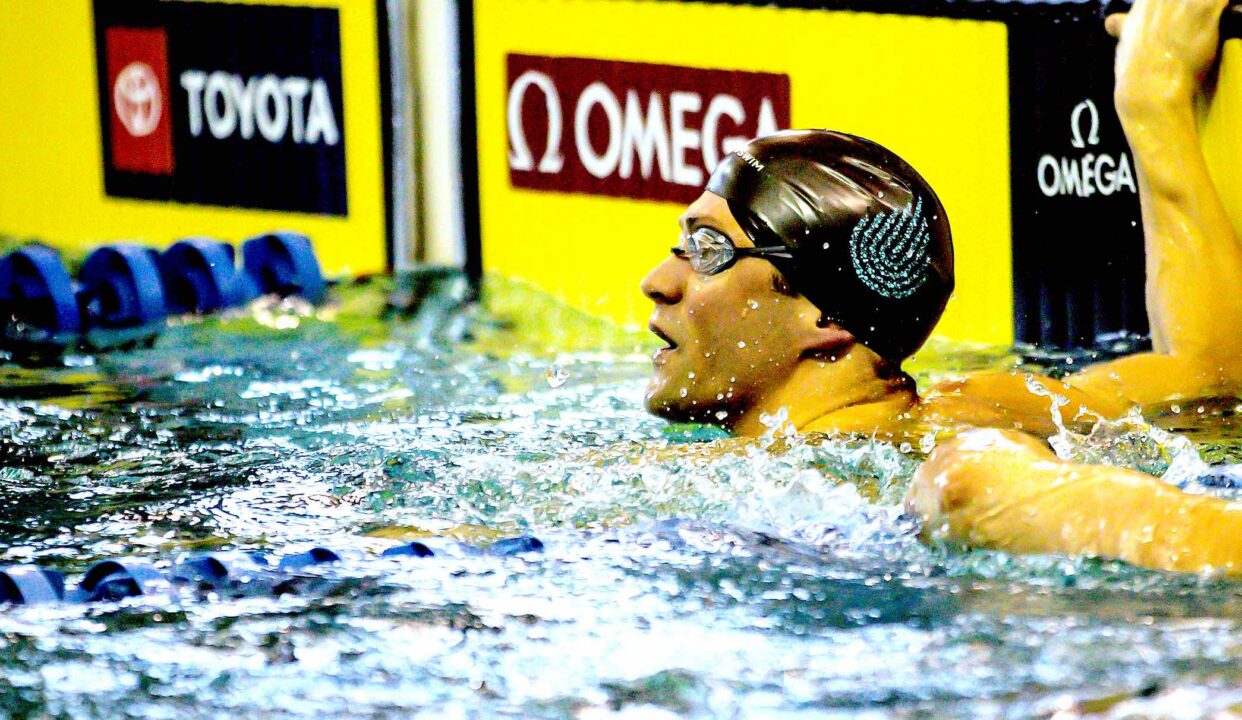Courtesy of James Fike, Founder and CEO of Fike Swim.
If your initial reaction to the question was “no way!”, you were probably in the majority, the vast majority. As swimmers, we are conditioned to believe that we have to grind long practices nine times per week (or more) to be competitive at any level. And if you’re aiming for the Olympics, those practices have to look like a certain kind of crazy and they have to hit a minimum number of meters, maybe around 6,000-7,000. There are a select few who could make the Olympic Team (yes, the U.S. one) on training of far less quantity, but at least as much intensity in and out of the water.
First, let’s set a few ground rules for who could make the U.S. Olympic Team on five swims per week:
- TALENT – you must have Olympic-level talent. Some people have it and most don’t, and no matter what the rest of us do, we never have a chance.
- AGE – you probably need to be at least 22 and no older than about 40 as a guy, and about 20 to 40 as a woman. I lowered the starting age for women because they mature quicker than men, and I kept the ceiling the same because it’s been done before (remember Dara Torres at 41). In these age ranges, the swimmer is physically developed and has probably put in years of high-volume training.
- EVENT – obviously, your best chance is as sprinter, 50 and 100. If the Olympics were yards, I would also include the 200 events, but that distance is a different animal in long course and admittedly requires more training.
Now that we have the ground rules, let’s look at what it would take:
SWIM SCHEDULE:
Five per week, right? Monday, Tuesday, Thursday, Friday, and Saturday would be best. Monday and Tuesday would give you momentum from being off on Sunday (a very necessary recovery day). The workouts need to be tailored to your events, no yardage for the sake of yardage. For example, if you’ve got a shot in the 100 back and you used to be a great 200IMer, you shouldn’t be doing breaststroke sets. Just focus on the 100 back, which would include complementary long axis freestyle work. Similarly, a breaststroker shouldn’t be doing sets like 5×300 freestyle pull.
The problem older swimmers run into is they cling to an old version of themselves and try to out-train that version, as if age is a growing obstacle requiring more of everything (distance, time, effort, intensity) because the only way past this obstacle is up and over the top. The way around the obstacle is with less volume but more effort/focus/intensity/commitment to everything else in training that maybe wasn’t as much of a priority when the swimmer was in college, such as with lifting, stretching, rest/recovery, and diet. Here’s a sample swim week:
Monday – aerobic with the volume depending on the age of the swimmer (ie someone in their 30s might be around 2,000 and someone in their 20s around 3,000-4,000).
Tuesday – race pace-focused training of around 3,000-4,000, including roughly 1,200 warm up and 300-500 cool down. Low-volume, high-intensity swimming that mimics the demands of the one or two events the swimmer will race. This can be aerobic or anaerobic.
Thursday – similar to Tuesday but potentially less intense depending on the swimmer and the difficulty of Wednesday’s lift (see below).
Friday – similar to Monday, but probably lighter after two tough swims and three tough lifts.
Saturday – similar to Tuesday and Thursday.
STRENGTH TRAINING:
The idea of skipping a practice mid-week is heresy in our sport, but it can be done. The catch to five swims per week is you probably have to put in three lifts a week with Wednesday being functional since it’s a dry day. Done right, functional strength training can provide many of the same benefits as a hard swim practice and can be used to maintain the gains made in the pool on Monday and Tuesday (the myth of missing a day and needing one to two days of training to recoup your “losses” is nonsense).
CYCLING:
No, not the wheeled variety. Depending on the age of the swimmer, I’ve found cycling through a pattern of either three weeks or four weeks hard and one week easy is beneficial for maintaining the necessary high intensity of low-volume training. Just how intense and easy again depends on the swimmer. Such a pattern also helps the swim-life balance that changes significantly the older you get.
There are incredibly talented swimmers in their 20s and 30s who need to know they have a legitimate path to their goals that considers their age, experience, shifting priorities, and evolving strengths and weaknesses. I hope this gives them, and you, some alternative ideas for training and inspires new approaches. Don’t be afraid to break away from tradition and SWIM DIFFERENT! Good luck!
If you like this article and still want to know more, stay tuned to the Fike Swim:
About Fike Swim
“We design products exclusively for the toughest sport in the world. We unapologetically place swimmers on a pedestal. The rigors they embrace on a daily basis can only be understood by another swimmer and they deserve a company focused 100% on helping them succeed. Whether you’re just starting out or training for Paris, we stand behind you.”
–James Fike, Founder
Fike Swim Products was born when founder James Fike put a brick on top of a kickboard and transformed just another legs-only kick set into a total body workout felt into the next day. Since then it’s been our mission to create unique swim equipment with the single-minded goal of making you faster. We don’t sell toys. We create tools to help you reach your potential.
Fike Swim is a SwimSwam partner.

